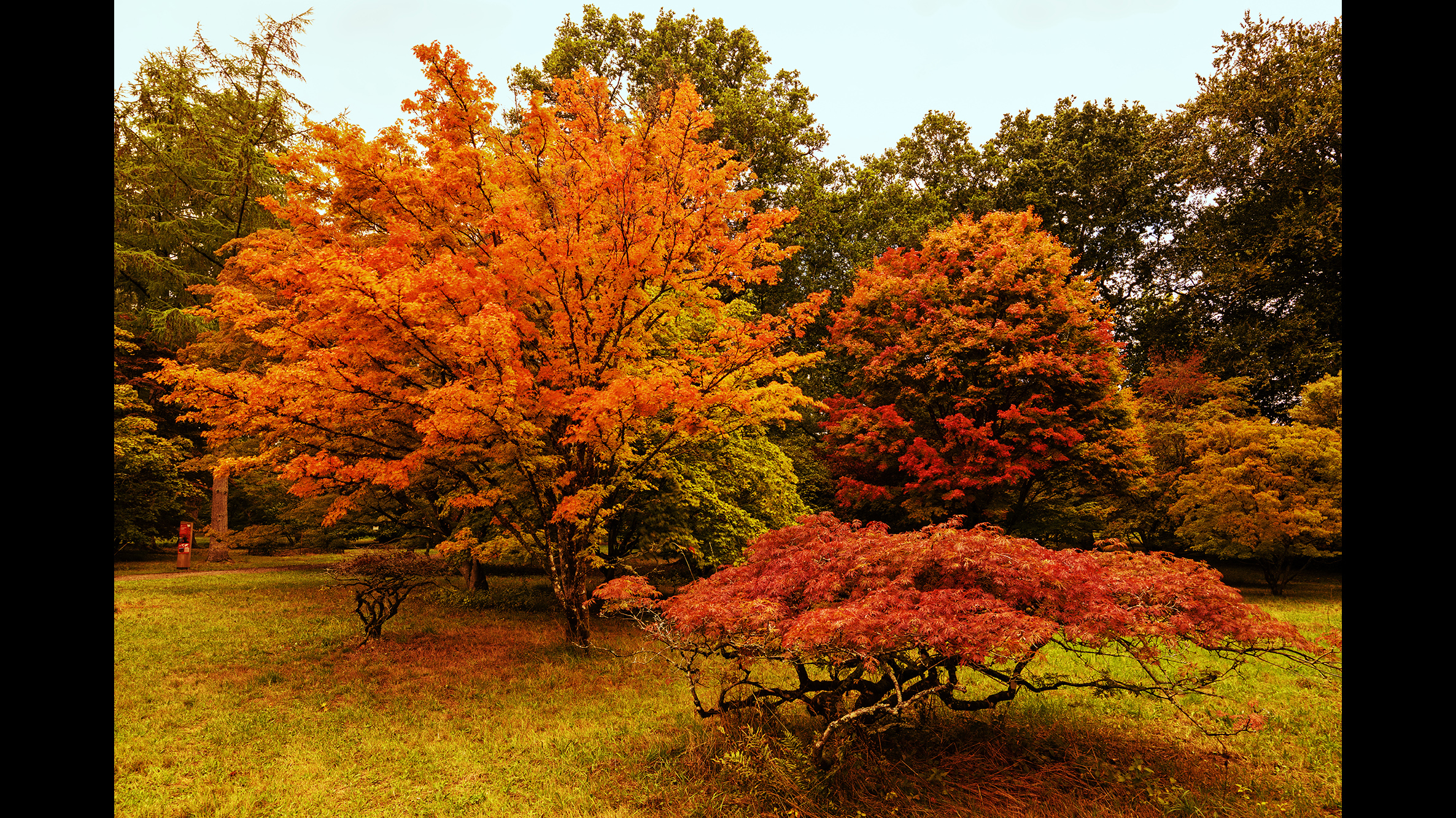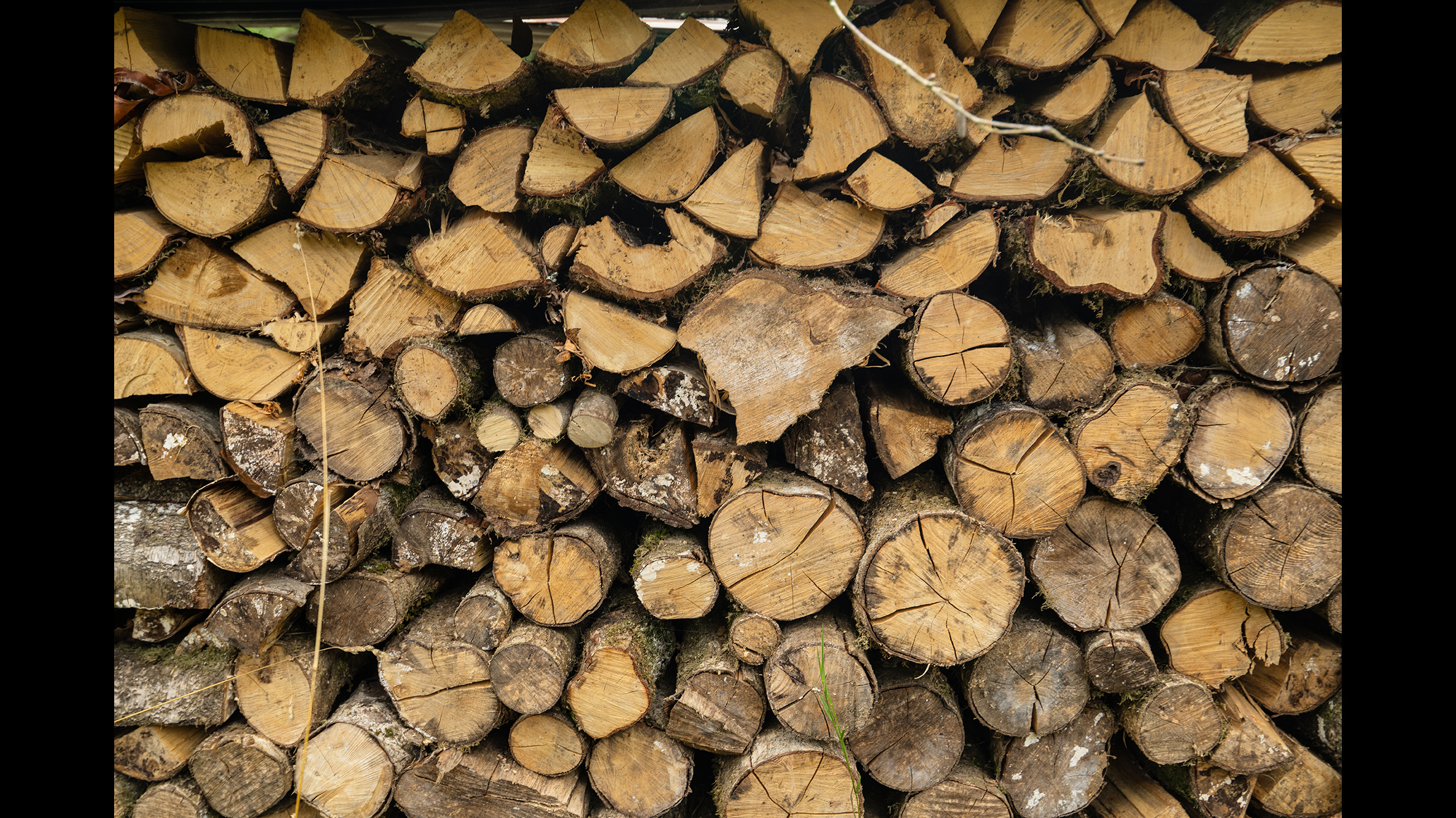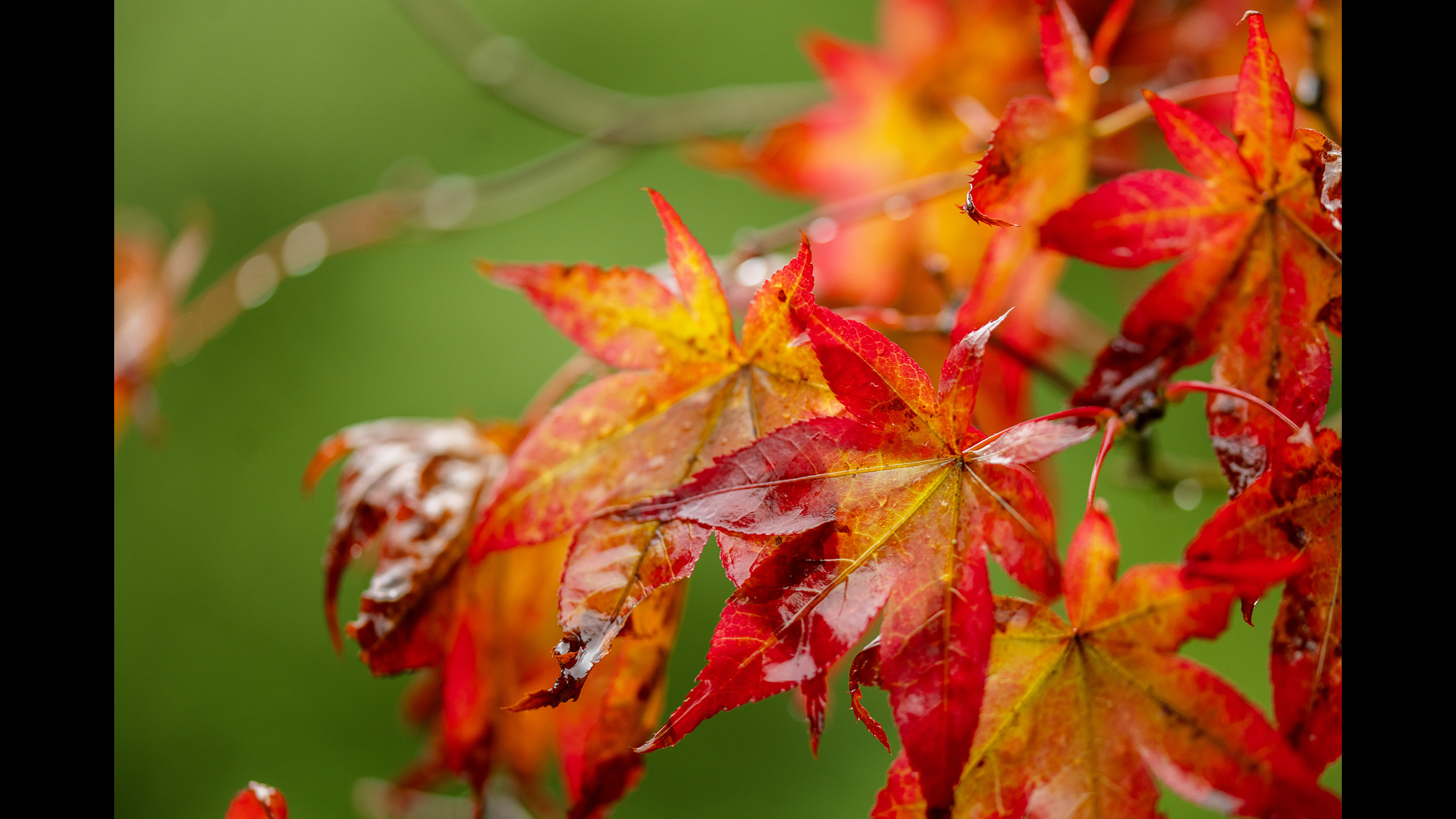
The dictionary might define an arboretum as “a place where trees or shrubs are cultivated for their scientific or educational interest”, but I’d say it’s a place you can go to capture a variety of interesting photos, from landscapes, abstracts, and patterns to macro. The best time to go is, of course, fall, because of the red and yellow colors adding to the greens of the all-year-round foliage. Now is pretty much your last chance for the year, as winter weather sweeps in and there are more leaves on the ground than on the trees, which is why I visited Westonbirt National Arboretum in the UK.
What lenses should I take, I hear you ask? Well, surprisingly, I wouldn’t go with a super wide-angle lens (like 18mm), as the widest you’re likely to need is a 24-28mm standard zoom, and often you’ll want to zoom in to frame specific features. The other consideration is that this is a wood/forest, so if you need more space for a shot, simply move backwards, and avoid the heavy distortion that you get with those super wide-angle shots.
The other lens to definitely pack is a 105mm or 150mm macro lens for flowers, mushrooms, berries, and leaf close-ups. In fact, if you really want to set yourself a challenge, just take that 105mm macro lens because you can still use it for your landscape shots as well as the macro ones.
1. The standard landscape shot

Here’s a standard landscape shot, using the red foliage to provide depth. I composed the image so that the trees progressively step back as you look into the photo, from the bush-like one in the foreground onwards. I used an aperture of f/8 to maximize the lens’s sharpness and depth of field.
2. Flower portraits

Under the cover of the trees there will be wild flowers and mushrooms growing, especially as we get into the wet season. I brought a mat to kneel/lie on and a beanbag to rest my camera on to keep it steady (If permitted, you could use a travel tripod). This setup allowed me to get down low to photograph at my subject’s level. For group shots, I like to put the first flower on a third vertical and focus on the stamen.
3. Let’s get abstract

If you’re visiting a managed wood/forest, somewhere there will be a pile of chopped up logs just asking to be photographed. Duly oblige them by filling the frame with the logs and shooting from parallel to the pile to make it about the pattern and textures. Here, I used a 35mm focal length at f/6.3.
4. Launch an ICM

A classic shot is looking straight up towards the tree canopy, but as the sky was grey and dull, I decided to hone my intentional camera movement (ICM) skills. This is where you use a slow shutter speed to intentionally introduce motion blur as you physically move the camera in the desired direction.
For this image, I paused initially to get a solid recording of the tree and then moved the camera downwards to create streaking highlights. I used a narrow f/22 aperture, blocking enough light so I could reach a 1/4th sec exposure.
5. Turn over a new leaf

There will likely be flowering trees and trees with fruit, as well as leaves turning a spectacular color, like the image above. I deployed my macro lens with a wide aperture to blur the background. If the sky is blue, you can compose your subject with that as the background; otherwise, try to find a shot where the green foliage is in the distance for a more pleasing backdrop.
Digital Camera World is the world’s favorite photography magazine and is packed with the latest news, reviews, tutorials, expert buying advice, tips and inspiring images. Plus, every issue comes with a selection of bonus gifts of interest to photographers of all abilities.
Subscribe now with our latest subscription deal! View Deal
Author: Wendy Evans
Source: DigitalCameraWorld
Reviewed By: Editorial Team



